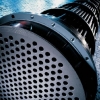RL Blogs

By Colin Malone of Inspectioneering
May 10, 2015Tips for managing refinery heat exchanger tube inspections. |
||
| Inspection planning is essential for the successful inspection and maintenance of heat exchanger tubulars. The process flow can be summarized into the following steps:
Heat Exchanger Tubular Data Analysis
When selecting an inspection technique, the choice should be largely based on how the data from the inspection is planned to be used. If qualitative data on tubular thickness is needed, then a more qualitative screening should be used. If calculations need to be made to get reasonably accurate corrosion rates, then a quantitative method should be chosen.
When calculating corrosion rates, a good tip is to establish a retirement thickness first. This serves to signal when it’s time to replace tubes or even the entire bundle.
The retirement thickness can depend on many factors, such as the risk or consequence of a tube leak. For example, if a bundle failure would be hazardous to safety or the environment, then a higher retirement thickness would minimize the chance of a leak before retubing.
For those with lower risks, lower retirement thickness values could be established.
Inspection Scheduling
There are at least four common methods of scheduling bundle inspections:
Of these methods, time-based is probably the oldest and simplest. It involves scheduling inspections based on the date and is commonly connected with maintenance opportunities such as turnarounds. Condition-based is the second-oldest method and involves scheduling inspections based on deterioration rates.
Risk-based scheduling is the newest method. It involves planning inspection based on tubular condition, so that higher risk bundles are inspected more frequently than lower risk bundles.
Finally, consequence-based scheduling is an offshoot of the risk-based method of scheduling bundle inspections. As the name implies it is primarily based on the impact of tubular failure on the business when deciding how often to inspect.
Heat Exchanger Tubular Inspection Techniques
This section covers the advantages and limitations of a few available methods to heat exchanger tubular inspection and some not-so-common methods that have specialized applications.
Internal Rotating Inspection System (IRIS) is one of the most commonly used methods. It’s biggest advantage is that it can detect and size corrosion on both the ID and OD of the tube, including pit depths, and measure remaining wall thickness fairly accurately.
Eddy Current Testing (EC) is one of the oldest techniques available, but is only applicable to non-ferromagnetic tubulars. It can be used to detect, characterize and size tubular flaws, including wall thinning, cracking, de-alloying and subsurface voids due to microbiologically influenced corrosion.
It is faster than IRIS, but generally less accurate for general wall thinning and requires a highly skilled technician to get good quality results.
Magnetic Flux Leakage (MFL) can be used to inspect ferromagnetic tubulars for thinning. It is faster and requires less tube cleanliness than IRIS. However, it is less accurate in sizing wall loss and thus is more useful as a qualitative screening technique.
Heat Exchanger Tubular Cleaning Methods
Before inspection, heat exchanger tubulars require cleaning so that debris doesn't interfere with the inspection.
There are several ways of cleaning heat exchanger tubulars in preparation for inspection, but they can be roughly grouped into four categories: hydro-blasting, abrasive blasting, chemical cleaning, and other methods. Choosing any particular method depends primarily on the degree of cleanliness required for the selected inspection method, although cost, availability, safety, speed, and degree of corrosion or fouling can also factor into the method chosen.
Heat Exchanger NDE Technician Qualifications
Finally, one of the most important factors in obtaining a good quality heat exchanger tubular inspection is to have qualified technicians using the best available NDE equipment. Likewise, a performance demonstration program should be required to test technicians with their equipment and procedures.
Keeping all these things in mind during the planning, cleaning, and inspection process for heat exchanger tubulars, should make keeping heat exchange tubulars in good condition a quick and easy process. Likewise it will help to keep any factory with heat exchange tubulars in tip top shape.
See Also
| ||
|
|

.png)
.png)







